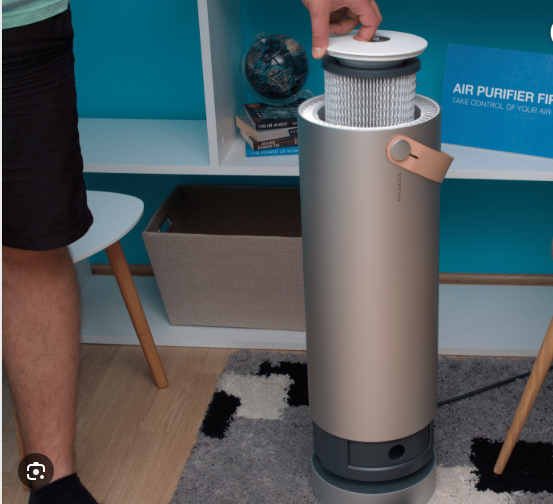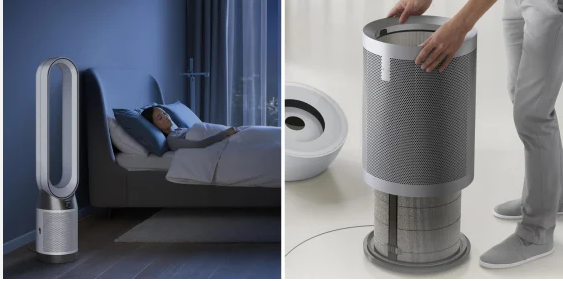Learning how to improve indoor air quality with air purifier is key to creating a healthier, more comfortable living environment. Air purifiers are powerful tools for removing pollutants, allergens, and odors, but their effectiveness depends on proper usage and maintenance. In this detailed guide, we’ll explore the best practices for using an air purifier to enhance indoor air quality, including air purifier setup, maintenance, and troubleshooting tips. Whether you’re using a portable air purifier or a larger unit, this article will help you master how to improve indoor air quality with air purifier for cleaner, fresher air.
Why Improving Indoor Air Quality with an Air Purifier Matters
Indoor air can be up to five times more polluted than outdoor air, with allergens, dust, pet dander, and volatile organic compounds (VOCs) contributing to health issues like allergies, asthma, or respiratory discomfort. Understanding how to improve indoor air quality with air purifier helps reduce these pollutants, creating a safer and more pleasant home. Proper use of an air purifier, combined with regular air purifier maintenance, ensures consistent air quality improvements and supports long-term health. Let’s dive into the steps and air purifier tips to maximize your device’s impact.
How Air Purifiers Improve Indoor Air Quality
Air purifiers work by filtering out harmful particles and pollutants from the air. Here’s how they contribute to better indoor air quality:
- HEPA Filters for Allergens: High-Efficiency Particulate Air (HEPA) filters capture 99.97% of particles as small as 0.3 microns, including dust mites, pollen, pet dander, and mold spores, significantly reducing allergens.
- Activated Carbon Filters for Odors: These filters absorb odors, smoke, and VOCs from sources like cooking, cleaning products, or paint, improving air freshness.
- Pre-Filters for Larger Particles: Pre-filters trap larger debris like pet hair, extending the life of main filters and maintaining efficiency.
- Continuous Air Circulation: By running continuously, air purifiers keep pollutant levels low, ensuring consistent air quality.
By targeting these pollutants, air purifiers create a healthier indoor environment. For more details on choosing the right model, visit our clean air guide.
Steps to Improve Indoor Air Quality with Air Purifier
To maximize the benefits of your air purifier, follow these steps for effective use:
Choose the Right Air Purifier
Selecting a model suited to your needs is the first step in how to improve indoor air quality with air purifier. Consider these factors:
- Room Size: Choose a purifier with a Clean Air Delivery Rate (CADR) appropriate for your room’s square footage. A portable air purifier is ideal for smaller spaces, while larger units suit bigger rooms.
- Filter Type: Opt for a true HEPA filter for allergens and an activated carbon filter for odors.
- Noise Levels: Select a quiet model for bedrooms to ensure uninterrupted sleep while maintaining air quality.
Proper Air Purifier Setup
Correct air purifier setup enhances efficiency:
- Place the purifier in a high-traffic area, like a bedroom or living room, with at least 12 inches of clearance around it for optimal airflow.
- Position it away from walls, furniture, or corners to avoid blocking vents.
- Plug the unit directly into a wall outlet for air purifier safety, avoiding extension cords.
Run the Purifier Continuously
For best results, run your air purifier 24/7, especially in high-pollution environments or during allergy seasons. Use auto mode or lower fan speeds to balance efficiency and energy use. Continuous operation ensures consistent pollutant removal.
Keep Windows and Doors Closed
Prevent outdoor pollutants like pollen or dust from entering by keeping windows and doors closed while the purifier is running. This allows the device to focus on cleaning indoor air.

Air Purifier Maintenance for Optimal Air Quality
Regular air purifier maintenance is crucial to ensure your device continues to improve indoor air quality. Follow these practices:
- Replace Filters on Schedule: Replace HEPA filters every 6–12 months and activated carbon filters every 3–6 months, depending on usage and air quality. Check the manual for specific timelines.
- Clean Washable Filters: For pre-filters or permanent filters, clean every 1–2 months with a vacuum or mild soap and water. Ensure they’re completely dry before reinstalling.
- Wipe Down the Unit: Clean the exterior and vents with a damp cloth every 2–3 weeks to prevent dust buildup that could reduce efficiency.
- Check for Blockages: Ensure air intake and output vents are free from obstructions to maintain airflow and performance.
Proper maintenance keeps your air purifier working effectively to improve indoor air quality. For more tips, visit our filter maintenance tips page.
Air Purifier Troubleshooting: Addressing Air Quality Issues
If your air purifier isn’t improving indoor air quality as expected, try these air purifier troubleshooting steps:
- Poor Air Quality: If allergens or odors persist, check if the filter is clogged or overdue for replacement. Ensure the purifier is sized for the room.
- Reduced Airflow: Clogged filters or blocked vents may reduce performance. Clean or replace filters and reposition the unit for better airflow.
- Unusual Noises: Noise could indicate a clogged filter or loose component. Inspect and address as needed.
- Filter Light On: If the filter replacement light is on, replace or clean the filter and reset the indicator per the manual.
Addressing these issues ensures your air purifier continues to enhance air quality effectively.
How to Clean with an Air Purifier for Better Air Quality
Cleaning your home can stir up dust and allergens, but using an air purifier strategically can help. Here’s how to clean with an air purifier to improve indoor air quality:
- Run During Cleaning: Turn on the purifier at a medium or high fan speed while vacuuming, dusting, or sweeping to capture airborne particles.
- Position Strategically: Place the purifier near the cleaning area but away from direct debris to avoid overloading the filter.
- Clean Filters Post-Cleaning: After heavy cleaning, check and clean pre-filters to prevent clogging, ensuring continued air quality improvement.
These practices enhance your air purifier’s ability to maintain clean air during and after cleaning tasks.
Additional Tips to Improve Indoor Air Quality
While an air purifier is a powerful tool, combining it with other strategies can further enhance indoor air quality:
- Control Humidity: Use a dehumidifier to keep humidity levels between 30–50%, reducing mold and dust mite growth.
- Ventilate When Possible: Occasionally open windows on low-pollution days to refresh indoor air, but avoid this during high-pollen seasons.
- Reduce Pollutant Sources: Minimize indoor smoking, use low-VOC cleaning products, and vacuum regularly with a HEPA-filtered vacuum to reduce dust.
- Add Houseplants: Certain plants, like spider plants or peace lilies, can complement air purifiers by naturally filtering some pollutants.
Combining these methods with proper air purifier use maximizes indoor air quality improvements.

Choosing the Best Air Purifier for Indoor Air Quality
Selecting the right air purifier is critical for how to improve indoor air quality with air purifier. According to the best air purifier guide, consider these features:
- True HEPA Filter: Essential for capturing allergens like pollen, dust mites, and pet dander.
- Activated Carbon Filter: Ideal for removing odors and VOCs for fresher air.
- Appropriate CADR: Ensure the Clean Air Delivery Rate matches your room size for optimal performance.
- Portable Air Purifiers: Compact models are versatile for targeting specific rooms, making them ideal for apartments or small homes.
Choosing a model tailored to your needs ensures maximum air quality benefits. For recommendations, visit airpurifierr.com.
Air Purifier Safety: Ensuring Effective Use
Following air purifier safety practices supports air quality improvements and protects your device:
- Unplug Before Maintenance: Always unplug the unit before cleaning or replacing filters to avoid electrical hazards.
- Keep Dry: Place the purifier in a dry area to prevent mold growth, which can worsen air quality.
- Use Stable Power: Plug into a wall outlet to avoid power fluctuations that could affect performance.
Conclusion: Master How to Improve Indoor Air Quality with Air Purifier
Understanding how to improve indoor air quality with air purifier empowers you to create a healthier home environment. By choosing the right model, practicing proper air purifier setup, and maintaining your device with regular air purifier maintenance, you can effectively reduce pollutants and allergens. Addressing issues through air purifier troubleshooting and using air purifier tips like strategic cleaning and continuous operation will maximize air quality benefits.
Whether you’re using a portable air purifier or a larger unit, these strategies will help you breathe cleaner air. For more expert advice on air purifier use and maintenance, visit airpurifierr.com. Start improving your indoor air quality today for a healthier, fresher home!